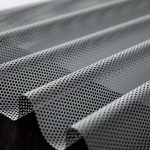Locating underground utilities before starting any type of work, whether it’s renovating your home and having to break down the walls and the floor, or a construction company starting to work on a brand new building, is of the essence to avoid any worst case scenarios. With that being said, contractors use a variety of different utility locating devices to prevent damage and injuries by pinpointing the location of every cable and pipe on the work site.
One of the most common tools used for discovering underground utilities is the electromagnetic utility locator. This device generates an electromagnetic radio frequency which is applied to the ground and all utilities that contain conductive material are detected. It is quite accurate and it’s commonly used to detect phone, cable, propane, electric, gas, water, sewer, irrigation and storm lines. However, these tools can’t locate unmarked plastic, non-ductile pipes, tera-cotta, concrete and asbestos. Additionally, this technology doesn’t perform that good beyond depths of 5-7 metres, but most utilities don’t go beyond that depth anyway.

Another popular way is by using a GPR device, also known as a “Ground Penetrating Radar”. This technology uses high frequency pulses as well, by emitting radio waves into the ground which are deflected by the facilities, and the signal is then sent back. The buried utilities are displayed on the display screen of the GPR device, and you can find buried pipes, manholes, cables, tanks and other objects which you won’t locate on an electromagnetic utility locator. However, extensive training and experience is required to operate this device successfully and efficiently.
Aside from the aforementioned two methods, which are used in the majority of utility locating jobs, there are some that aren’t as conventional, yet are very reliable, such as the dowsing method. Dowsing rods can be made from coat hangers and they indicate whether or not you’re standing on top of an active pipeline. They won’t tell you the exact depth of the pipeline, however, many contractors claim that they’re a reliable way to find pipelines. This just goes to show that there is a wide array of methods used to locate utilities, some sophisticated, while others like dowsing…not so much.
Lastly, there’s vacuum excavation. This method is quick and non-destructive, and it utilizes high pressure to break up soil and vacuum it into a tank. This method is primarily used in soil conditions where pressurized water breaks up the soil. Another names for this method are potholing, hydro-digging, soft digging and hydro-trenching.





Comments are closed.